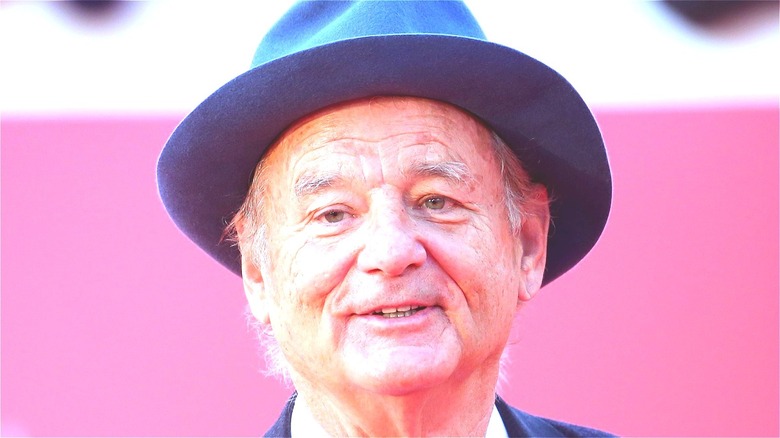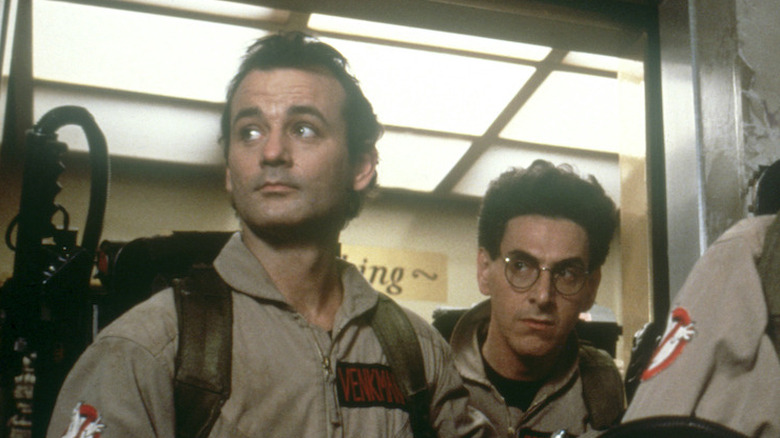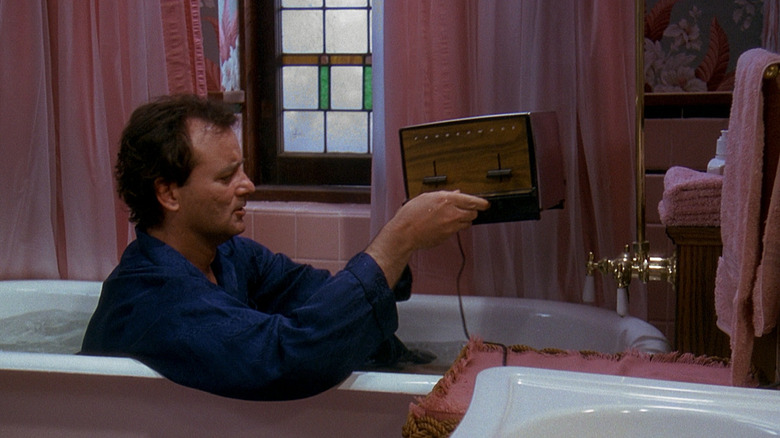How Groundhog Day Ruined Harold Ramis And Bill Murray's Friendship
Bill Murray and Harold Ramis were a comedic duo that dominated '70s and '80s cinema. From their first meeting on "The National Lampoon Radio Hour" in 1974, the two comedians took an instant liking to one another, something Ramis insisted was due to their contrasting comedic styles, and how well those styles complemented one another (per The New Yorker). Ramis' words rang true in the ensuing years, as the pair went on collaborate on classics like "Meatballs," "Stripes," "Caddyshack," and the blockbuster sensation "Ghostbusters."
When Ghostbusters 2 hit the theaters in 1989, it seemed like the friendship between the two was unbreakable and that they would continue collaborating for many years to come. Indeed, that's exactly what they had planned. Their follow-up project, "Groundhog Day," is widely regarded as one the best films in Murray's entire filmography, and was a smash hit when it released in 1993. However, the film's success will be overshadowed forever by what happened behind the scenes, where Ramis and Murray broke off their decades-long friendship.
Conflicting styles can only get you so far
Earlier in their careers, Harold Ramis had praised the conflicting styles he and Bill Murray brought to their projects, but those differences in vision began to take more of a toll during the filming of "Groundhog Day." Murray, despite his status as one of the most beloved actors in history, has always had a reputation as someone with whom it's tough to collaborate. From the very start of the production, Murray made it clear that his vision for "Groundhog Day" was in stark contrast to the vision Ramis had in mind, even going so far as to do his own rewrites of Ramis' already rewritten script. Murray wanted the film to be an existential, chilling picture, while Ramis wanted it to be a studio-friendly comedy. Both refused to budge, and their arguments got so bad, eventually the two would not even speak to one another, instead relaying messages through an assistant (per CheatSheet).
Murray's disdain for the warm tone of the film is no surprise when you realize that, at the time of filming, he was undergoing a brutal midlife crisis that was tearing his life apart, according to Ramis' daughter, Violet Ramis Stiel (per Parade). In the throes of a bitter divorce, Murray's frustration at life boiled over into his work, and his push for the film to become a more serious contemplation on the meaning of life seems more understandable when you look at it through his perspective.
An instant classic, and a bittersweet legacy
After the film was complete, the bond between Harold Ramis and Bill Murray was shattered, and the two did not speak again for 21 years. "Groundhog Day" became an instant classic, and in a bittersweet sort of irony, the conflicting tone of the film (as Murray's philosophical musings on life and fulfillment clashed with Ramis' heartwarming tone) is one of the reasons the comedy is so fondly remembered. Despite its warm attitude, the film makes us all take a deep look inside ourselves and ask what we would do if we got a do-over.
In later years, Ramis admitted the rift between the two left "a huge hole in [his] life." "There are so many pride issues about reaching out," Ramis explained. "Bill would give you his kidney if you needed it, but he wouldn't necessarily return your phone calls." It seems that, over the years, Murray was able to squash some of that pride, as the two reconciled shortly before Ramis' death in 2014, but the lasting impact their feud had on the film industry itself can never be undone. Surely many fans wish these two could have had a "do-over," just like in the film, to see what they would have made together.


